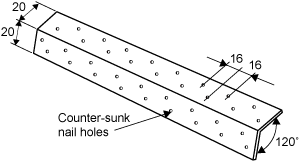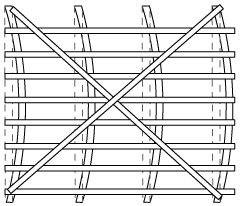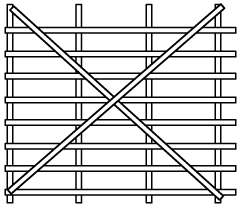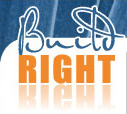Diagonal bracing to stabilise roof planes
Diagonal bracing is required to address top chord distortion. It is used in other parts of the roof as well, for example, the bottom chords and webs. Bracing is often provided by a steelbrace. A steelbrace is made from metal strapping and has a slight bend along the centre line. A typical specification for steelbrace is shown below.

Diagonal steelbraces that cross over the top chords act as tension ties. If the ties are only fixed at the ends, the mid regions of the top chords can still move sideways. If the steelbrace is fixed to every element it crosses, the forces arising from wind or lateral buckling can be transferred to the supporting structure. Consequently, the whole assembly can be kept square.
The steelbrace must also be attached to elements such as walls that transfer loads to the structure.

Ties are only fixed at the ends

Steelbrace is fixed to every
element it crosses
